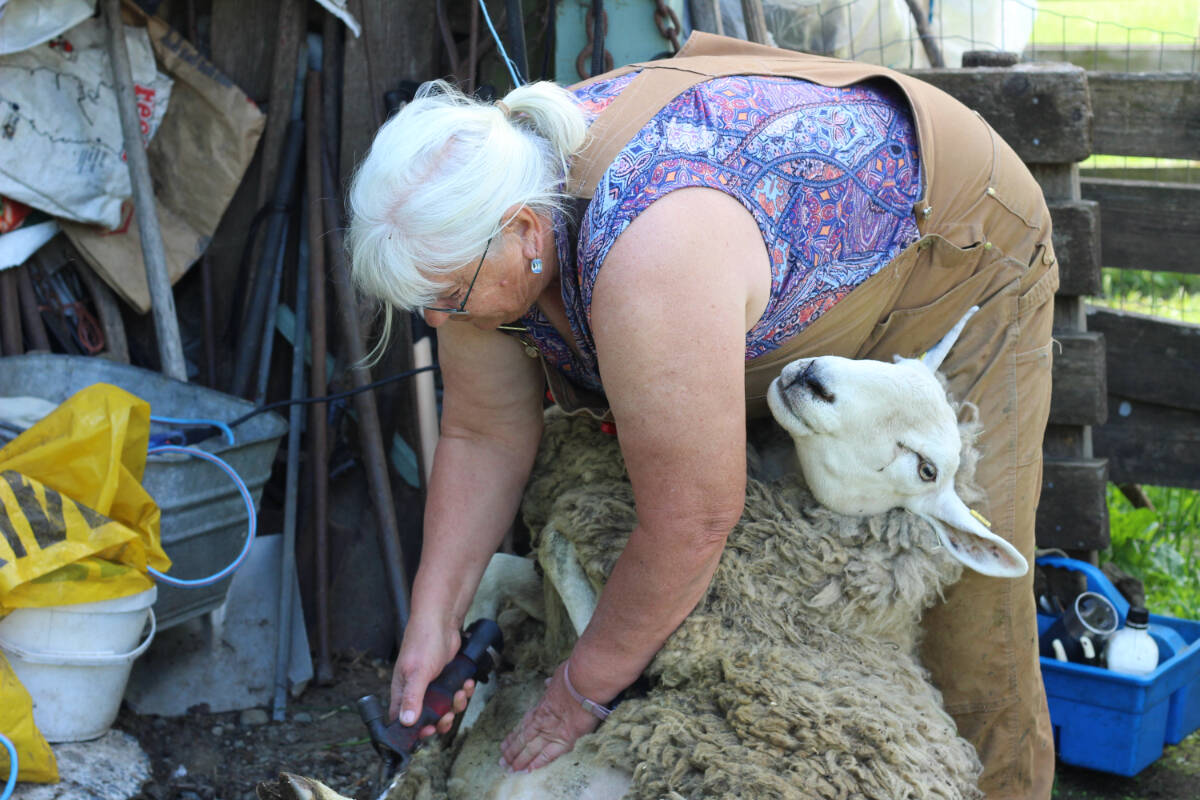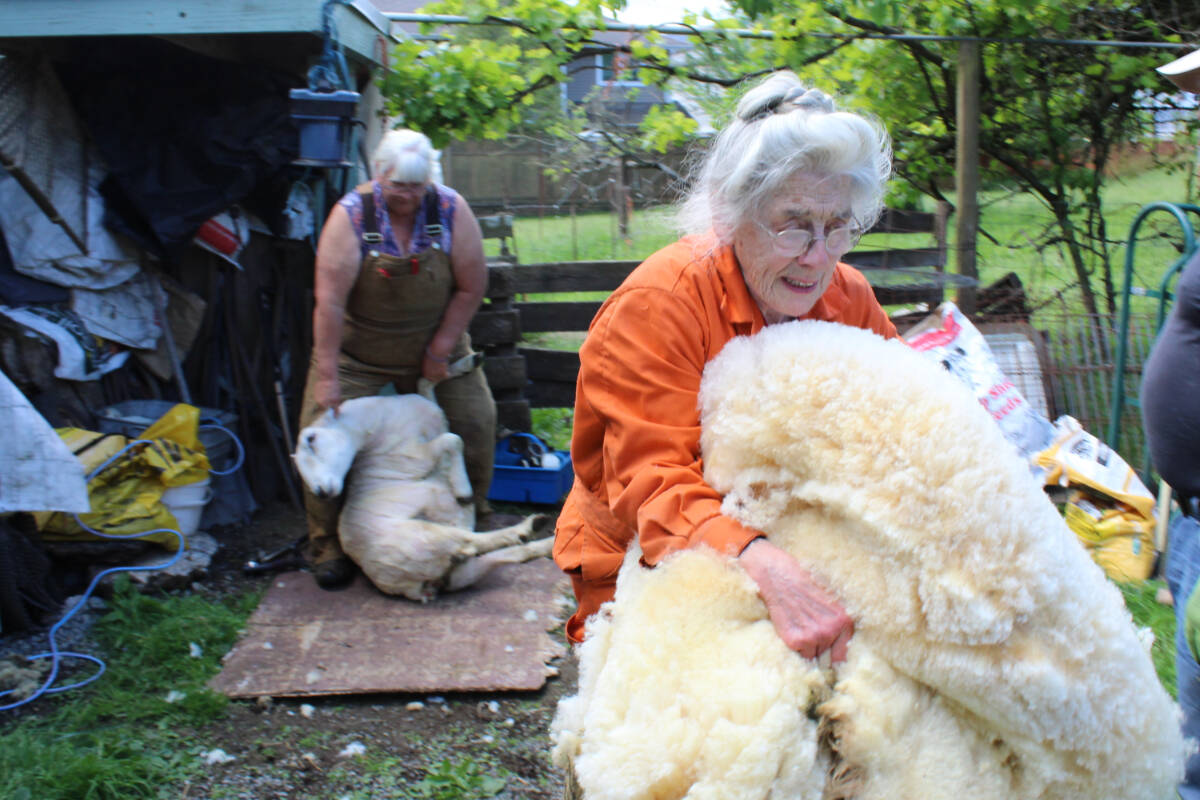The shearing of a Nanaimo senior’s sheep was a neighbourhood affair last week, attracting family friends to see their first shearing, a neighbour’s hand to help out and, of course, a professional shearer needed to make it happen.
“I’m going to give them all a pair of scissors and we’ll be done in a minute,” joked shearer Lorea Tomsin as one of the ewes was brought out.
Deborah Wytinck, 75, wanted to be a farmer since she was nine. In the late 1970s she and her late husband Don arrived in Nanaimo and began raising their livestock, dubbed coneygeers flock.
At its height, the couple had a hundred north country cheviot breeding ewes, but now it’s just four: Beanie, Beanita, BWX and GGW. The sheep are bred for lambs which then are either sold to larger operations or used for mutton.
But the money isn’t why Wytinck does it – it’s the holistic benefits that keep her farming even after her husband’s death in March. She said she doesn’t know what the long-term future may hold, but for now she’s keeping the farm going.
“It’s a good, healthy life and you feed well and you keep active,” Wytinck said. “We make a certain amount of profit, but the inputs always exceeds your output it seems in farming.”
READ MORE: Nanaimo sheep farmer voices fears over flung dog feces
The flock require about three hours of work a day. Wytinck said it’s mostly comprised of keeping the holding pens clean, with a bit of time toward feeding the animals grain and hay.
“Your biggest thing is having safe perimeter fences, number one. The next thing us having divided pastures,” she said. “Unfortunately when you’re like me who is no good at fence building it’s pretty difficult because all … lifestock can be difficult on fencing. Especially Beanie’s mother over there, Beanita.”
In the past, the unprocessed wool would be sold for processing in Duncan, but with the mill no longer in operation there, it has to be sent off Island.
“We used to sell the very best to hand spinners. In fact, we still do, but not to the same degree since it takes a lot of time and effort,” Wytinck said. “These are a hill breed, therefore it’s not a wool you wear next to your skin, it’s an outer.”
With wool comes the need for an annual shearing.
A fellow wool producer, Tomsin has spent the last 57 years shearing sheep “pregnant or otherwise” visiting farms throughout Cedar, Courtenay, Sechelt and other places.
Along with a cut, she gives each an oral boost of de-wormer, and the young get their ear identification tags, done similarly to a piercing.
Tomsin said she has seen a “huge decrease” of sheep and cattle farms in the past number of years.
“The economics of feed production has been really hard hard because the animals eat ‘x’ amount of hay per day or feed and it’s so expensive,” she said.
According to Tomsin, a producer needs a large number of animals if they want to turn a profit, and even then they may need an additional income.
“The reality is, in agriculture in Canada, almost every farm has an outside worker, a person bringing in money, but what I call that is cash flow throughout the year. To be waiting for harvest at certain times of the year means you’re without money for certain months. So people are always working a job.”
This is why Wytinck said she and Don began focusing on purebreds. Last year they sold a set of triplets for $6,000, but Wytinck warned not all lambs go that well.
“With a purebred animal you are reproducing, maintaining the character, but you know that the offspring, that’s what you’re going to get,” Wytinck said. “Into totally producing meat, you’re definitely going to need to cross breeds and that will give you a higher percentage of meat most times.”
With the urbanization of Nanaimo, she said she believes she will be the last to run the farm since she can’t imagine the agricultural zoning will be granted to the property again if it’s ever lost.
“It will die when I die or leave it,” she said.






